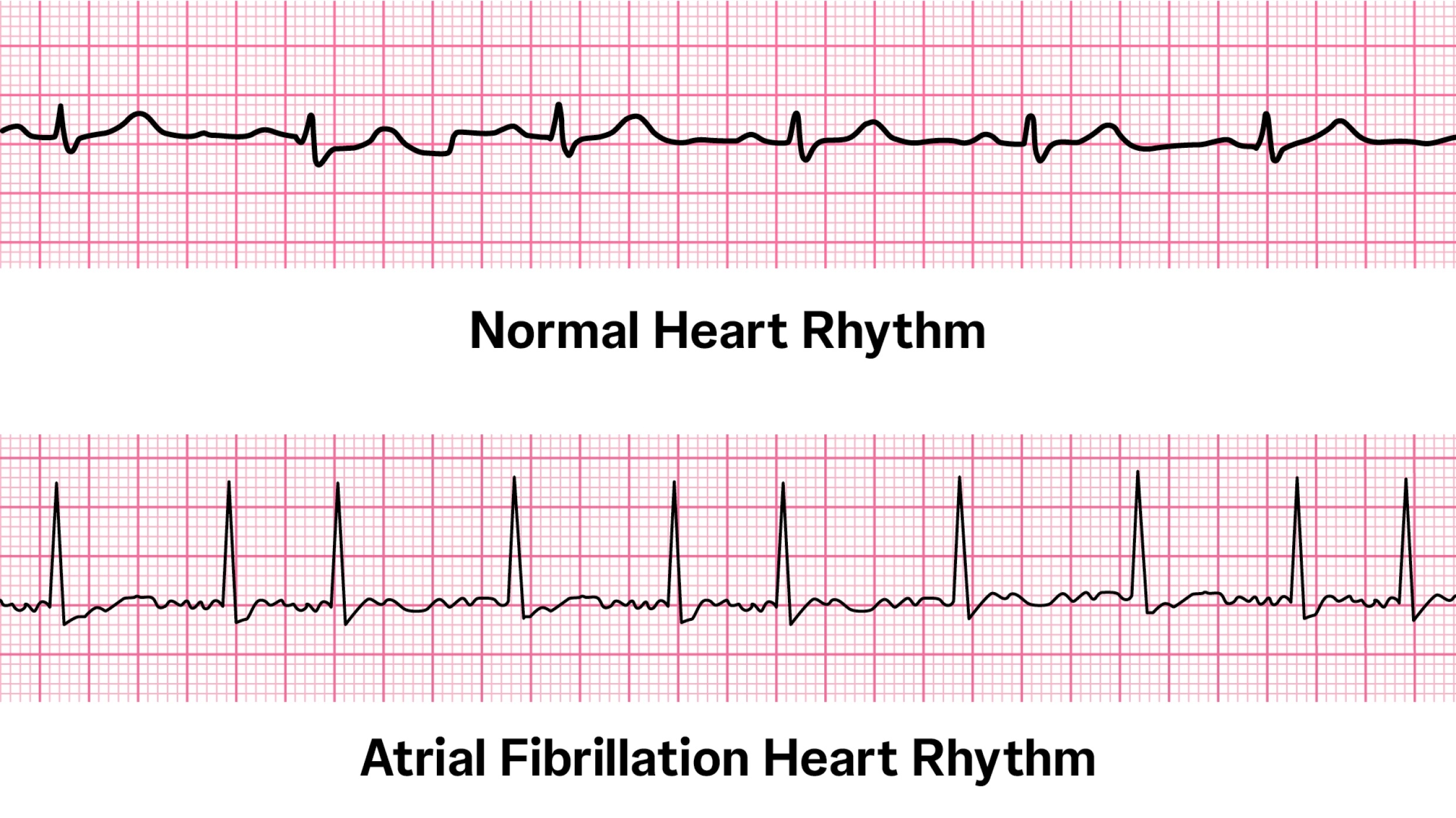 |
| Researchers believe that with the increase in technology for monitoring heart rates (watches and smartphones), better efforts can be made to carefully treat atrial fibrillation and mitigate visual field progression in glaucoma patients. Photo: Johnson & Johnson. Click image to enlarge. |
Cardiac arrhythmias like atrial fibrillation (AFib) can lead to stroke, heart failure and even sudden death, but this condition can harm more than a patient’s heart. In the past, studies have found an association between atrial fibrillation and glaucoma, but these reports never examined the effects on the progression of glaucoma. Research conducted at the University of California, recently published in Journal of Glaucoma, elaborates on how atrial fibrillation impacts the visual field of glaucoma patients.
Subjects had to be diagnosed with primary open-angle glaucoma but free of cardiac arrhythmia to be selected for this study. This allowed the researchers to measure a baseline visual field. Then, patients were followed for approximately 15 years before the final results were analyzed. A total of 144 eyes from 105 patients were selected, then divided into two groups. Patients that developed AFib during the study period were categorized as cases; all others were used as controls. The cases consisted of 48 eyes and the controls consisted of 96 eyes.
All subjects reported an average baseline visual field worsening of -0.20 dB/year; in cases that developed AFib, it was -0.28 dB/year after the event. Control subjects showed an insignificant difference after the follow-up period, reporting an average visual field of -0.21 dB/year.
Researchers also assessed everyone’s scores on two common measures of stroke risk in AFib patients called CHADS2 and CHA2DS2-VASc. These each assign point values based on the presence of various risk factors (e.g., congestive heart failure, hypertensions, diabetes). Higher scores indicate greater risk of stroke. “In this retrospective cohort study, we found that the presence of atrial fibrillation, and both higher CHADS2 and CHA2DS2-VASc score were associated with a small but significantly faster rate of visual field progression in patients with glaucoma,” stated the researchers in their study.
On average, AFib patients in the study lost -0.07 dB/year more of their visual field for every unit of their CHADS2 score. So, a CHADS2 score of 0 would correspond with approximately -0.07 dB/year, while a score of 5 was measured at about -0.42 dB/year. This same principle was used when analyzing CHA2DS2-VASc scores, except the average visual field loss in correlation with this score was measured at -0.05 dB/year.
“Our findings may indicate that the presence of atrial fibrillation and related microvascular damage are associated with a faster visual field loss in patients with glaucoma, suggesting that impaired circulation has a role in glaucoma progression,” concluded the researchers in their paper on this study. “Our study underscores the need for comprehensive medical history assessment and the management of cardiovascular risk factors to mitigate the risk of fast disease progression.”
| Click here for journal source. |
Nishida T, Moghimi S, Jin W, et al. Rates of visual field progression before and after the onset of atrial fibrillation. J Glaucoma. September 25, 2024. [Epub ahead of print]. |

